Explore null | Canon Latin America

EOS 60D
- 18.0 megapixel CMOS imaging sensor (APS-C size)
- Up to 5.3 fps shooting speed; Burst Rate - 58 Large/Fine JPEGs, or 16 RAW images
- First EOS camera ever with vari-angle LCD monitor (over 1 million dot resolution)
- Full HD 1920x1080 video; manual exposure control and sound level control possible
- EOS 60D Body
- Eyecup Eb (not shown)
- Wide Strap EW-EOS 60D
- USB Interface Cable IFC-130U
- Stereo AV cable AVC-DC400ST
- Battery Pack LP-E6
- Battery Charger LC-E6
- EOS Digital Solution Disc and Instruction Manuals "Great Photography is Easy" Booklet and "Do More with Macro" Booklet (not shown)
-
OVERVIEW
-
SPECIFICATIONS
-
ACCESSORIES
-
RESOURCES
-
SUPPORT
-
MISCELLANEOUS
An EOS with Perspective.


















The improved DIGIC 4 Image Processor ensures that images are captured, processed and saved with remarkable speed. The EOS 60D DSLR's new 3:2 multiple aspect ratio, in-camera RAW image processing, creative filters, image resizing and provided S2 and S3 image-recording quality are all possible thanks to the DIGIC 4 Image Processor. With dazzling results, the new DIGIC 4 Image Processor also works to capture and process data of images shot at 18.0 Megapixels at 5.3 fps, as well as 14-bit signal processing for excellent image gradation, enhanced Face Detection Live mode, Full HD video recording, Auto Lighting Optimizer and Lens Peripheral Optimization.

18.0 Megapixel CMOS Sensor

DIGIC 4 Image Processor
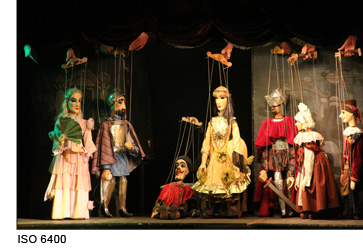
The audio input level can be set to Auto or Manual, up to 64 levels, and a wind filter minimizes unwanted background noise. By pressing the Quick Control button, a simple graphic user interface for adjusting image quality, white balance, image creation and other settings appears on the LCD. The EOS 60D even lets users edit video in-camera: On-site or off, unnecessary scenes can be deleted and the start/end points of video footage can be designated via in-camera editing functions without the need of a separate computer.

Video can be captured at a number of resolutions and frame rates for numerous applications. It can capture 1920 x 1080 Full HD video at frame rates of 30 (29.97 fps), 24 (23.976 fps) and 25.0 frames per second, for up to 4GB per clip. Video footage is saved as MOV files and can be viewed in Full HD through the EOS 60D DSLR's HDMI output. Other recording sizes include HD at 1280 x 720 (50/60 fps) or SD/VGA at 640 x 480 (50/60 fps) - 24/30 fps delivers cinema-like motion, while 60 fps is perfect for footage being uploaded to video-sharing websites. The EOS 60D also has a built-in microphone for simple mono recording and stereo sound can be recorded through a self-powered external microphone.
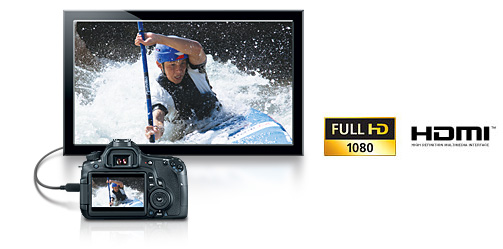
With 1,040,000 (dots/VGA) pixels for spectacular detail, the advanced, smudge-resistant monitor includes high transparency materials plus anti-reflective and water-repellant coatings to provide clear and bright viewing. Superb for reviewing, editing and deleting photos or composing new images in Live View function, the Vari-angle Clear View LCD monitor is also the perfect means for accessing camera settings like ISO, metering modes, AF Point selection, the horizontal Electronic Level and flash options.

The EOS 60D also features an advanced horizontal Electronic Level, that, when activated, is superimposed on the LCD monitor to aid in achieving evenly leveled shots by indicating the horizontal tilt up to approximately 9° in 1° increments.
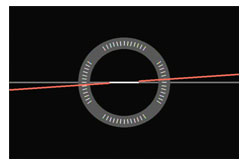
Electronic Level
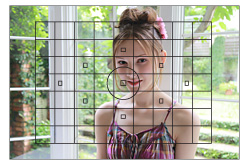
Metering Zones
Additionally, once you capture an image with the EOS 60D, you can digitally manipulate it in-camera with a number of creative filters for artistic and dramatic effect. Options include Soft Focus Effect to convey dreamy tableaus; Grainy Black-and-White Effect for a gritty, hard-bitten look; Toy Camera Effect - the deliberate vignetting and color shift technique popular in art photography - and Miniature Effect, which blurs the top and bottom edges of the image to emphasize perspective and conveys a miniaturized look of the scene.

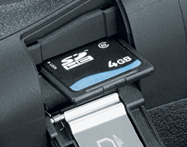
The EOS 60D is compatible with all Canon lenses in the EF and EF-S lineup, ranging from ultra-wide angle to super telephoto lenses. Canon lenses employ advanced optical expertise and micron-precision engineering to deliver unprecedented performance in all facets of the photographic process. Special optical technologies, such as aspherical, ultra-low dispersion, or fluorite elements are featured in the universally acclaimed L-series lenses. And Canon's Optical Image Stabilizer technology is featured in select lenses to minimize the effect of camera shake. Additionally, photographers can use for video the same lenses they do for still photography; Canon wide-angle, macro, super-telephoto, tilt-shift and fisheye lenses provide a wealth of focal lengths, depth-of-field and other creative shooting options once reserved for stills. Through Canon lenses, photographers can truly maximize the quality and liberating performance of the EOS 60D.
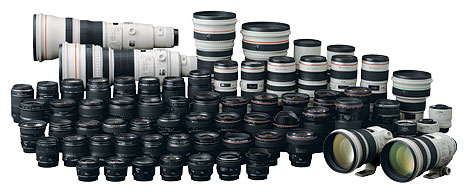
Flash Photography
With a flash sync speed of 1/250 of a second, the EOS 60D also features the acclaimed E-TTL II flash metering system. With any of the flashes in the EX Speedlite line, E-TTL II provides reliable flash output whether shooting fill-in flash pictures in sunlight, or using flash in total darkness. With E-TTL II, the exact same 35-zone metering sensor used for measuring ambient light is also used for flash metering - giving even finer metering command of the image area. If you prefer a broader area for flash metering, there's a menu setting to change to "Average" flash metering - where the entire 35-zone area is measured evenly for flash exposure. Additionally, the EOS 60D has a Speedlite transmitter built-in for convenient, full-featured wireless control of EX-series Speedlite flashes set as slave units.
The Canon Speedlite 430EX II is the ideal step-up accessory for powerful flash shooting with the EOS 60D. It has excellent flash power (maximum guide number of 141 ft./43m at ISO 100), and is the perfect way to get great flash pictures when you can't get right up to the subject. The 430EX II is also great for bounce flash, with its tilting and swiveling flash head. It automatically zooms the flash head to cover lenses ranging from 16mm up to 105mm or longer with the EOS 60D. Of course, it works with the camera to provide full E-TTL II automatic flash exposure. And the 430EX II has a powerful AF-assist beam, which allows the camera to autofocus even in total darkness on subjects as far as 32 ft. from the camera.
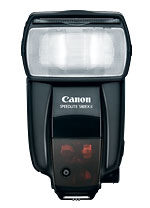
Speedlite 430EX II
Software
Canon EOS Digital Solution Disc (Version 23.0)
The EOS 60D comes bundled with an updated Canon EOS Digital Solution Disc, which features powerful software programs designed to extend the EOS experience to the computer. These include Canon's EOS Utility (Version 2.9.0), Digital Photo Professional (Version 3.9.1), ZoomBrowser EX for Windows® (Version 6.6.0), ImageBrowser for Macintosh® OS X (Version 6.6.0), the Picture Style Editor (Version 1.8.0), PhotoStitch (Version W: 3.1.22/M: 3.4.4), WFT Utility (version 3.5.1), Memory Card Utility (Version 1.4), WFT Utility (Version 3.5.1), Original Data Security Tools (Version 1.9.0). Each application is designed to perfect the captured images and streamline the digital workflow.
EOS Utility (Version 2.9.0) for Macintosh or Windows handles the connection between the camera and computer, whenever they're connected via USB. It allows remote controlled shooting from the computer, handles downloading of images from the camera to the computer, and allows seamless linking to either Canon's ZoomBrowser/ImageBrowser or Digital Photo Professional software once images have been copied to the hard drive. Furthermore, it's used to upload settings back into a USB-connected camera.
Digital Photo Professional (Version 3.9.1) is an image processing program that enables high-speed RAW image processing, high-speed previewing for real-time image adjustment and support for sRGB, Adobe RGB and Wide Gamut RGB color spaces. Because it's CMS (Color Management System) compatible, Digital Photo Professional allows for easy image layout and printing in Adobe RGB in conjunction with Easy-PhotoPrint and PictBridge printers. It also features the Dust Delete Data Detection tool for cleaner images.
ZoomBrowser EX (Version 6.6.0) for Windows and ImageBrowser (Version 6.6.0) for Mac OS X are the easy, user-friendly options for viewing and editing of JPEG and even RAW image files. Both allow viewing of numerous types of images including finished TIFF and BMP files. Both also have a variety of search options for finding images, allow re-naming of single images or batches of files, and offer a variety of options for printing without using a separate image-editing program.
Picture Style Editor (Version 1.8.0)
Canon's Picture Style Editor enables photographers to create custom Picture Style profiles that can be used to customize the appearance of JPEG and RAW images captured with EOS Digital SLR cameras. Picture Style files created with Picture Style Editor can be loaded into the EOS cameras that support Picture Style and may also be used when processing RAW images in Canon software applications Digital Photo Professional, ZoomBrowser EX (for Windows) and ImageBrowser (for Mac).
| Type | Digital, Single-Lens Reflex, AF/AE Camera With Built-In Flash |
| Recording Medium | SD/SDHC/SDXC Card |
| Image Format | 0.88 X 0.59 In. / 22.3 X 14.9mm (APS-C Size) |
| Compatible Lenses | Canon EF Lenses (Including EF-S Lenses) (35mm-Equivalent Focal Length Is Approx. 1.6x The Lens Focal Length) |
| Lens Mount | Canon EF Mount |
| Type | High-Sensitivity, High-Resolution, Large Single-Plate CMOS Sensor |
| Pixels | Effective Pixels: Approx. 18.0 Megapixels: 5200 (H) X 3462 (V) Pixels |
| Total Pixels | Total Pixels: Approx. 19.0 Megapixels: 5432 (H) X 3492 (V) Pixels |
| Aspect Ratio | 3:2 (Horizontal: Vertical) |
| Color Filter System | RGB Primary Color Filters |
| Low Pass Filter | Fixed Position In Front Of The CMOS Sensor |
| Dust Deletion Feature | 1. Self Cleaning Sensor Unit 2. Dust Delete Data Appended To The Captured Image 3. Manual Cleaning Of Sensor |
| Recording Format | Design Rule For Camera File System 2.0 And Exif 2.3 |
| File Size | 1. Large/Fine: Approx. 17.90 Megapixels (5184 X 3456) 2. Medium/Fine: Approx. 8.00 Megapixels (3456 X 2304) 3. Small 1/Normal: Approx. 4.50 Megapixels (2592 X 1728) 4. Small 2/Fine: Approx. 2.50 Megapixels (1920 X 1280) 5. Small 3/Fine: Approx. 0.35 Megapixels (720 X 480) 6. RAW: Approx. 17.90 Megapixels (5184 X 3456) 7. M-RAW: Approx. 10.10 Megapixels (3888 X 2592) 8. S-RAW: Approx. 4.50 Megapixels (2592 X 1728) Exact File Sizes Depend On The Subject, ISO Speed, Picture Style, Etc. |
| Backup Recording | N/A |
| File Numbering | Consecutive Numbering, Auto Reset, Manual Reset. |
| Raw Jpeg Simultaneous Recording | Provided (SRAW+JPEG Also Possible) |
| Color Space | SRGB, Adobe RGB |
| Picture Style | Standard, Portrait, Landscape, Neutral, Faithful, Monochrome, User Def. 1-3 |
| Settings | Auto, Daylight, Shade, Cloudy, Tungsten Light, White Fluorescent Light, Flash, Custom, Color Temperature Setting |
| Auto White Balance | Auto White Balance With The Image Sensor |
| Color Temperature Compensation | White Balance Correction: ±9 Stops In Full-Stop Increments White Balance Bracketing: ±3 Stops In Full-Stop Increments Blue/Amber Direction Or Magenta/Green Direction Possible |
| Color Temperature Information Transmission | Provided |
| Type | Eye-Level Pentaprism |
| Coverage | Vertical/Horizontal Approx. 96% |
| Magnification | Approx. 0.95x (-1m-1 With 50mm Lens At Infinity) / 27.0° Angle Of View |
| Eyepoint | Approx. 22mm (At -1m-1 From Eyepiece Lens Center) |
| Dioptric Adjustment Correction | -3.0 To +1.0m-1 (Diopter) |
| Focusing Screen | Interchangeable (Ef-D: Grid Lines, Ef-S: Point Of Focus, Ef-A Standard Focusing Screen Provided) |
| Mirror | Quick-Return Half Mirror (Transmission: Reflection Ratio Of 40:60) |
| Viewfinder Information | AF Information (AF Points And Focus Confirmation Light), Exposure Information (Shutter Speed, Aperture, ISO Speed (Always Displayed), AE Lock, Exposure Level, Spot Metering Circle, Exposure Warning), Flash Information (Flash Ready, Flash Exposure Compensation, High-Speed Sync, FE Lock, Red-Eye Reduction Light), Image Information (Highlight Tone Priority (D+), Monochrome Shooting, Maximum Burst (2-Digit Display), White Balance Correction, Card Information), Electronic Level (Horizontal Only), Battery Check |
| Depth Of Field Preview | Enabled With Depth-Of-Field Preview Button |
| Type | TTL-CT-SIR AF-Dedicated CMOS Sensor |
| Af Points | 9 (Cross-Type, Center AF Point With Dual Cross Sensor For F/2.8) |
| Af Working Range | EV 0-20 (At 73°F/23°C With EF 50mm F/1.4 USM Lens, ISO 100) |
| Focusing Modes | Autofocus, One-Shot AF, Predictive AI Servo AF, AI Focus AF, Manual Focusing (MF) |
| Af Point Selection | Automatic Selection, Manual Selection |
| Selected Af Point Display | Superimposed In Viewfinder And Indicated On LCD Panel |
| Af Assist Beam | Small Series Of Flashes Fired By Built-In Flash Effective Range: Approx. 13.1 Ft./4.0m At Center, Approx. 11.5 Ft./3.5m At Periphery*. * With An EOS-Dedicated Speedlite Attached, The Speedlite's AF-Assist Beam Is Emitted Instead. |
| Metering Modes | Max. Aperture TTL Metering With 63-Zone SPC With The Following Selectable Modes:
|
| Metering Range | EV 0-20 (At 73°F/23°C With EF 50mm F/1.4 USM Lens, ISO 100) |
| Exposure Control Systems | Program AE (Shiftable), Shutter-Priority AE (Safety Shift Possible), Aperture-Priority AE (Safety Shift Possible), Manual Exposure, Bulb, Full Auto, Flash Off, Creative Auto, Programmed Image Control Modes (Portrait, Landscape, Close-Up, Sports, Night Portrait), E-TTL II Autoflash Program AE (Evaluative Metering, Averaged Metering) |
| Iso Speed Range | ISO 100 - 6400 (In 1/3-Stop Or Whole-Stop Increments) - ISO 12800 Can Be Enabled With A Custom Function. - With [Highlight Tone Priority], The ISO Speed Range Will Be Automatically Set Within 200-6400. 1. In Creative Zone Modes, The Maximum Settable ISO Speed (400-6400) Will Vary Within The Automatic ISO Speed Range. |
| Exposure Compensation | Manual: ±5 Stops In 1/3- Or 1/2-Stop Increments AEB: ±3 Stops In 1/3- Or 1/2-Stop Increments * Indicated Up To ±3 Stops On The LCD Panel And In The Viewfinder. |
| Ae Lock | 1. Auto AE Lock - In The One-Shot AF Mode With Evaluative Metering, AE Lock Takes Effect When Focus Is Achieved. 2. Manual AE Lock - With AE Lock Button. (AE Lock Is Updated Each Time You Press The Button.) Enabled In All Metering Modes. |
| Type | Vertical-Travel, Mechanical, Focal-Plane Shutter With All Speeds Electronically-Controlled |
| Shutter Speeds | 1/8000 To 1/60 Sec., X-Sync At 1/250 Sec. 1/8000 To 30 Sec., Bulb (Total Shutter Speed Range. Available Range Varies By Shooting Mode) |
| Shutter Release | Soft-Touch Electromagnetic Release |
| Self Timer | 10-Sec. Or 2-Sec. Delay (Self-Timer/Remote Control) |
| Remote Control | For Remote Switch RS-60E3 |
| Type | Auto Pop-Up, Retractable, Built-In Flash In The Pentaprism |
| Flash Metering System | E-TTL II Autoflash |
| Guide Number | 43/13 (ISO 100, In Feet/Meters) |
| Recycling Time | Approx. 3 Sec. |
| Flash Ready Indicator | Flash-Ready Icon Lights In Viewfinder |
| Flash Coverage | Up To 17mm Focal Length (Equivalent To Approx. 28mm In 135 Format) |
| Fe Lock | Provided |
| Flash Exposure Compensation | Up To ±3 Stops In 1/3- Or 1/2-Stop Increments |
| Zooming To Match Focal Length | Provided |
| Compatible Flash | EX-Series Speedlites |
| Flash Metering | E-TTL II Autoflash |
| Flash Exposure Compensation | ±3 Stops In 1/3- Or 1/2-Stop Increments |
| Fe Lock | Provided |
| External Flash Settings | Flash Function Settings, Flash C.Fn Settings |
| Pc Terminal | None |
| Drive Modes | Single, High-Speed Continuous, Low-Speed Continuous, 10-Sec. Self-Timer/ Remote Control, Or 2-Sec. Self-Timer/Remote Control |
| Continuous Shooting Speed | High-Speed: Max. 5.3 Shots/Sec. (Approx.) Low-Speed: Max. 3.0 Shots/Sec. (Approx.) |
| Max Burst During Continuous Shooting | JPEG (Large/Fine): Approx. 58 RAW: Approx. 16 RAW+JPEG (Large/Fine): Approx. 7 1. The Number Of Possible Shots And Maximum Burst Apply To A 4GB SD Card Based On Canon's Testing Standards. |
| Shooting Modes | (1) Live View Shooting (2) Remote Live View Shooting (With A Personal Computer Installed With EOS Utility) |
| Focusing | Autofocus (One-Shot AF) 1. Live Mode - One-Point, Contrast AF. Switching To Another AF Point Possible. 2. Face Detection Live Mode - Face Detection, Contrast AF. Face Selectable. 3. Quick Mode - Nine-Point, Phase-Difference AF, Same As Normal Shooting. Manual Focus - Magnify The Image By 5x Or 10x And Focus Manually. |
| Metering Modes | Real-Time Evaluative Metering With The Image Sensor |
| Metering Range | EV 0-20 (At 73°F/23°C With EF 50mm F/1.4 USM Lens, ISO 100) * AE Lock Possible. * The Active Metering Time Can Be Changed. |
| Magnified View | By 5x Or 10x At AF Point Position |
| Grid Display | Provided (Two-Type Grid Displays) |
| Silent Shooting | Provided (Mode 1 And Mode 2) |
| Exposure Control | 1) Program AE For Video Shooting * For Shooting Modes Other Than Manual Exposure And Bulb. * Shutter Speed 1/30 - 1/4000 Sec. (Signal Accumulation Time), Aperture, And ISO Speed Automatically Set. 2) Manual Exposure * For Manual Exposure. * Shutter Speed (Signal Accumulation Time), Aperture, And ISO Speed (Auto/ Manual) Manually Set. The Shutter Speed (Signal Accumulation Time) Is Limited To 1/4000 Sec. At The Maximum And To 1/30 Sec. At The Minimum For 24/25/30 Fps Or 1/60 Sec. Or Higher For 50/60 Fps. |
| Exposure Compensation | Up To ±3 Stops In 1/3-Stop Increments * For Video, Exposure Compensation Will Not Be Applied Beyond ±3 Stops Even If The Exposure Compensation Has Been Set Beyond ±3 Stops. * For Still Images, The Exposure Compensation Can Be Set And Applied Up To ±5 Stops. |
| Video Playback | The Following Playback Is Possible: Playback, Slow Motion (Variable Speed Possible), Jump To First Frame, Previous Frame, Next Frame, Jump To Last Frame, Cut Out First Or Last Frame, And Audio Volume (11 Levels, Including Mute) * The Audio Level When The Camera Is Connected To A TV Set Is Adjusted With The TV Set. |
| Type | TFT Color, Liquid-Crystal Monitor |
| Screen Monitor Size | Wide 3.0-Inch (Screen Aspect Ratio Of 3:2) |
| Coverage | Approx. 100% Viewing Angle: Approx. 160° |
| Brightness Control | 7 Levels Provided |
| Interface Languages | 25 (English, German, French, Dutch, Danish, Portuguese, Finnish, Italian, Norwegian, Swedish, Spanish, Greek, Russian, Polish, Czech, Hungarian, Romanian, Ukraine, Turkish, Arabic, Thai, Simplified/Traditional Chinese, Korean, Japanese) |
| Image Display Format | Single Image Display (Two Types Of Single-Image Full Display And Two Types Of Shooting Information Display), Index Display (4-Image Index And 9-Image Index), Jump Display (1/10/100 Images, Shooting Date, By Folder, Video, Stills, Rating), AF Point Display, Histogram (1. Brightness 2. RGB), Magnify Zoom Display (1.5x To 10x Enabled In 15 Steps), Rotated Display (Manual, Auto) Slide Show (Image Selection: Playback According To All Images, Date, Folder, Movies, Stills, Or Rating; Display Time: 1, 2, 3, 5, 10, Or 20 Sec.; Repeat: Enable/Disable; Transition Effect: Off, Slide In, Fade 1, Fade 2) |
| Highlight Alert | With Single-Image Display (Info.) And Single-Image Display, Overexposed Highlight Areas Will Blink |
| Protection | Erase Protection Can Be Applied/Canceled For A Single Image, All Images In A Folder, Or All Images In The Card |
| Erase | Erase Single Image, Erase Selected Images, Erase All Images On Folder, Erase All Images In A Card, Or Erase Only Unprotected Images |
| Compatible Printers | PictBridge-Compatible Printers |
| Printable Images | JPEG Images Compliant To Design Rule For Camera File System 2.0 And Exif 2.3 (DPOF Printing Possible) And RAW Images Captured With The EOS 60D * Video Footage Cannot Be Printed. |
| Easy Print Feature | Provided |
| Dpof | Version 1.1 Compatible |
| Compatible Images | Direct Image Transfer With The Camera Has Been Abolished Since The Personal Computers' OS-Based Support Has Become Adequate For Image Transfers. |
| Custom Functions | Total 20 |
| Camera User Settings | Register Under Mode Dial's Setting |
| My Menu Registration | Up To Six Top-Tier Menu Options And Custom Function Settings Can Be Registered |
| Usb Terminal | For Personal Computer Communication And Direct Printing (USB 2.0 Hi-Speed) |
| Video Out Terminal | 1. Video OUT Terminal: NTSC/PAL Selectable 2. HDMI Mini OUT Terminal: Type C (Resolution Switches Automatically) |
| Battery | One Battery Pack LP-E6 AC Power Can Be Supplied Via AC Adapter Kit ACK-E6 With Battery Grip BG-E9 Attached, Two Battery Packs (LP-E6) Can Be Used. Six AA-Size Batteries Can Be Used. |
|||||||||||||||||||||||||||||||||||||||||||||||||||||||||||||||||
| Battery Life | 1) Camera Body Only:
2) With Battery Grip BG-E9:
|
|||||||||||||||||||||||||||||||||||||||||||||||||||||||||||||||||
| Battery Check | Auto | |||||||||||||||||||||||||||||||||||||||||||||||||||||||||||||||||
| Power Saving | Provided. Power Turns Off After 1, 2, 4, 8, 15 Or 30 Min. | |||||||||||||||||||||||||||||||||||||||||||||||||||||||||||||||||
| Date Time Battery | Built-In Secondary Battery When Fully-Charged, The Date/Time Can Be Maintained For About Three Months. |
|||||||||||||||||||||||||||||||||||||||||||||||||||||||||||||||||
| Start Up Time | Approx. 0.1 Sec. (Based On CIPA Testing Standards) | |||||||||||||||||||||||||||||||||||||||||||||||||||||||||||||||||
| Dimensions W X H X D | Approx. 5.69 X 4.17 X 3.09 In./144.5 X 105.8 X 78.6mm |
| Weight | 755g / 26.6 Oz (CIPA) 675g / 23.8 Oz (Body Only) |
| Operating Temperature Range | 32-104°F/0-40°C |
| Operating Humidity Range | 85% Or Less |
- Windows Server 2025
- macOS 15
- macOS 14
- macOS 13
- Windows 11
- macOS 12
- Windows Server 2022
- macOS 11
- Linux MIPS
- Linux ARM
- macOS 11.0
- macOS 10.15
- macOS v10.13
- macOS v10.14
- Windows Server 2019 (x64)
- macOS v10.14
- macOS v10.13
- Windows Server 2016 (x64)
- macOS v10.12
- Linux 64bit
- Linux 32bit
- OS X v10.11
- Windows 10
- Windows 10 (x64)
- OS X v10.10
- Windows Server 2012 R2 (x64)
- OS X v10.9
- Windows 8.1 (x64)
- Windows 8.1
- Windows Server 2012 (x64)
- Windows 8
- Windows 8 (x64)
- Windows 7
- Windows 7 (x64)
- Windows Vista
- Windows Vista (x64)
- Windows XP
- Windows XP (x64)
- Windows Server 2008
- Windows Server 2008 (x64)
- Windows Server 2008 R2 (x64)
- Windows Server 2003
- Windows Server 2003 (x64)
- Windows Server 2003 R2
- Windows Server 2003 R2 (x64)
- Windows 2000
- Windows NT
- Windows 3.1
- Windows Me
- Windows 98
- Windows 95
- Mac OS X v10.8
- Mac OS X v10.7
- Mac OS X v10.6
- Mac OS X v10.5
- Mac OS X v10.4
- Mac OS X v10.3
- Mac OS X v10.2
- Mac OS X v10.1
- Mac OS X
- Mac OS 9
- Mac OS 8
- Linux (x64)
- Linux (x32)
- Linux
- Not Applicable
Locating and Installing Your Download Cómo Localizar e Instalar su Descarga Localizando e Instalando seu Download
How to identify your OS version
To help determine which Windows operating system is running on your computer, please view the below steps:
Windows 11
Click on the Windows button (located left to the Search at the bottom).
Click on the Settings button to navigate to the system settings.
Scroll to the bottom of the page and click on the About button.
You will be able to find your Windows operating system under the Windows Specifications section.
Windows® 10
Click Start or click the Windows button (usually found in the lower-left corner of your screen).
Click Settings.
Click About (which is usually located within the lower left of the screen). The next screen should display the Windows version.
Windows 8 or Windows 8.1
Option1: Swipe in from the upper-right corner of the screen while viewing the desktop in order to open the menu, then select Settings.
Select PC Info. Under Windows edition, the Windows version is shown.
Option 2: From the Start Screen
While on the Start screen, type computer.
Right-click on the computer icon. If using touch, press and hold on the computer icon.
Click or tap Properties. Under Windows edition, the Windows version is shown.
Windows 7
Click Start or click the Windows button (usually found in the lower-left corner of your screen).
Right-click Computer and select Properties from the menu. The resulting screen should now display the Windows version.
Linux
To check the version of your Linux operating system (OS), you can use the following commands in your terminal:
1. uname -r: Displays your Linux kernel version.
2. cat /etc/os-release: Displays your distribution name and version.
3. lsb_release -a: Displays specific details about your Linux distribution and version.
4. You can also use the hostnamectl command to display the Linux kernel version. However, this command is only available on Linux distributions that use systemd by default.
To help determine which Mac operating system is running on your computer, select the Apple menu in the upper-left corner of your screen and choose About This Mac.
Upon selecting, you should see the macOS name followed by the version number.
Canon U.S.A Inc. All Rights Reserved. Reproduction in whole or part without permission is prohibited.